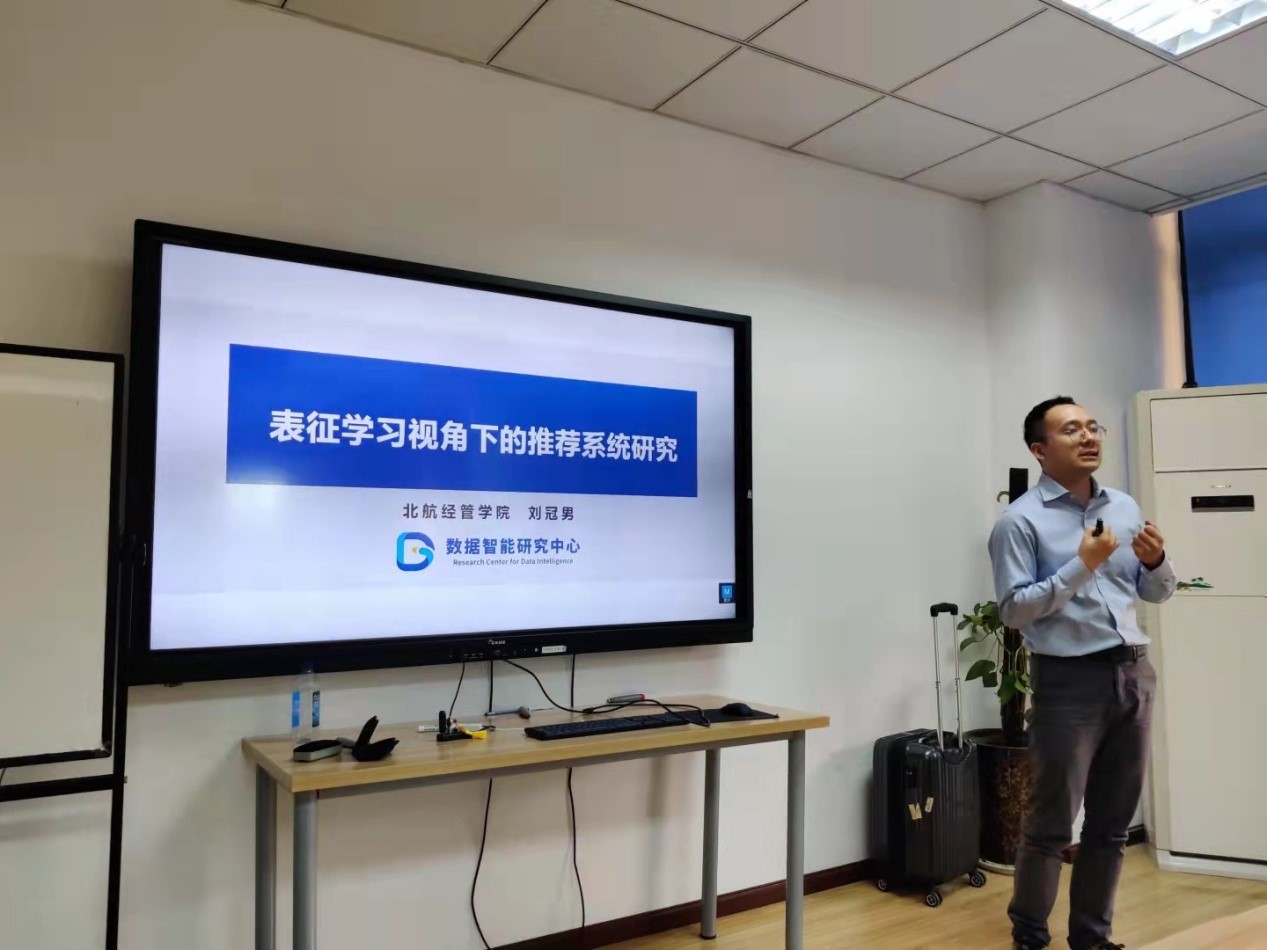
date: october 11th, 2021
time: 14:00 pm
venue: room 0411, teaching building 0#, jiuli campus
event details:
lecturer: associate professor liu guannan
about the lecturer:
liu guannan is an associate professor in the school of economics and management, beihang university, and deputy director of the beihang data intelligence research center. his research interests are data mining and business intelligence, artificial intelligence and smart management. in july 2016, he obtained a doctorate in management science and engineering from the school of economics and management of tsinghua university, and visited new york university in the united states from 2013 to 2014. he has published more than 20 academic papers, including the top journals ieee tkde, acm tkdd in the field of data mining, and the authoritative journal dss in the field of information systems. he has also published more than 10 papers in the top conferences in the field of international data mining such as kdd, icdm; and served as a program committee member of top conferences such as kdd, icdm, and aaai. he presided over 1 project of the national natural science foundation of china, and also presided over 3 projects of the national information security plan of the national computer and network information center. the artificial intelligence-based telecommunications anti-fraud system, which was developed and implemented by the team of pro. liu, was rated as an excellent project and selected as "safe brain" project. in 2019, he was selected as the youth top talent program of beihang university.
about the lecture:
thanks to the rapid development of deep learning, the use of deep neural networks to construct low-dimensional representation vectors of users and products, combined with collaborative filtering and other ideas, has become a frontier hot issue in the current research on recommendation systems. this report will introduce the basic ideas of deep representation learning, and discuss how to use deep learning networks to represent multi-modal information of users and products, so as to portray users' fine-grained preferences.




